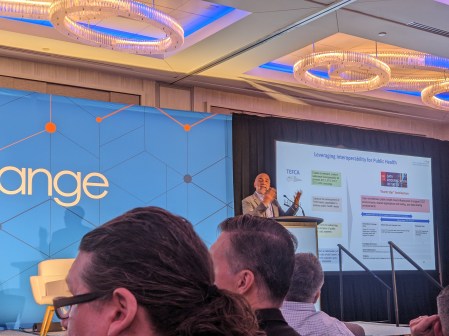HHS publishes framework for nationwide health information exchange

The Department of Health and Human Services satisfied a 21st Century Cures Act requirement by publishing a framework for exchanging health information nationwide Tuesday.
Together the Trusted Exchange Framework and Common Agreement (TEFCA) provide rules for securely sharing clinical data between health information networks. The former provides non-binding principles, and the latter establishes technical terms.
HHS‘s Office of the National Coordinator for Health IT was created in 2004 with a goal of establishing a nationwide health information network, and soon entities will be able to apply for a qualified health information network (QHIN) designation.
“We want to be able to create a uniform floor of interoperability so that every authorized [network broker] and authorized user, including individuals, have a baseline expectation of being able to get basic health care medical record information securely and reliably across the network — regardless of where they are geographically or which vendor they’re using, which technology they’re using,” Micky Tripathi, national coordinator for health IT, told reporters on a call Tuesday afternoon. “We also want to be able to greatly simplify connectivity.”
QHINs will sign the Common Agreement with recognized coordinating entity (RCE) The Sequoia Project, which will likely begin accepting applications on a rolling basis within 90 days, said CEO Mariann Yeagar.
The Sequoia Project will verify applicants meet QHIN requirements before admitting them to the exchange production environment in late 2022 or early 2023.
“The fact that this framework is really multipurpose is huge,” Yeagar said. “Everytime we want to enable a nationwide network of network capabilities or use cases, we don’t have to go and create a separate thing dedicated to that purpose.”
The exchange can be used for purposes including public health, benefits determinations, health-care operations, treatment, payment, and individual access. Of those QHIN applicants will be expected to address treatment and individual access, with additional eligibility criteria around the others.
The Sequoia Project hasn’t quantified how many health information networks, ambulatory practices, hospitals, health centers, federal agencies, public health agencies, and payers intend to seek QHIN status.
The agency also released the TEFCA Health Level Seven (HL7) Fast Healthcare Interoperability Resource (FHIR) Roadmap, outlining how the FHIR data standard will be incorporated into the exchange over time.
Tripathi encouraged the departments of Veterans Affairs and Defense in June to accelerate health-care interoperability efforts by adopting FHIR Release 4 (R4) on their platforms, ahead of the federal deadline in December 2022.
Still Stage 3 of FHIR adoption, QHIN-to-QHIN brokered exchange, remains “furthest down the road” in terms of maturity, Tripathi said Tuesday.
“The reason that we have a roadmap for incremental adoption of FHIR over time — and efforts to accelerate the maturity of it for the purposes of TEFCA exchange — are precisely because it’s not at a point of maturity yet for network enablement,” Tripathi said. “But, that said, there are a number of networks across the country who are starting to either run pilots or think about putting things into production that would help with the scalability of FHIR-based exchange.”





